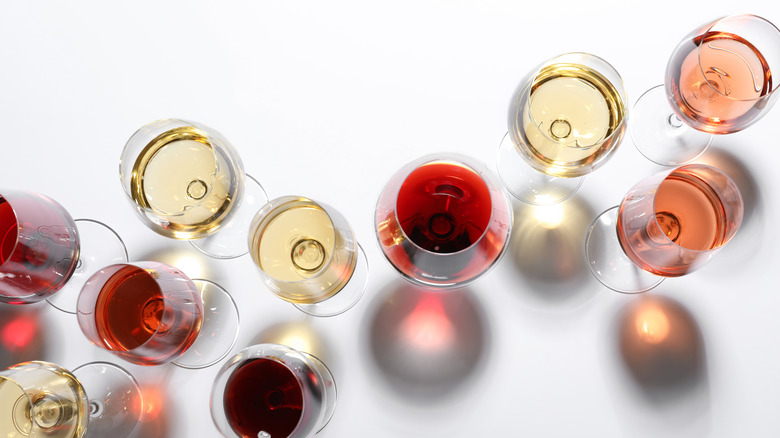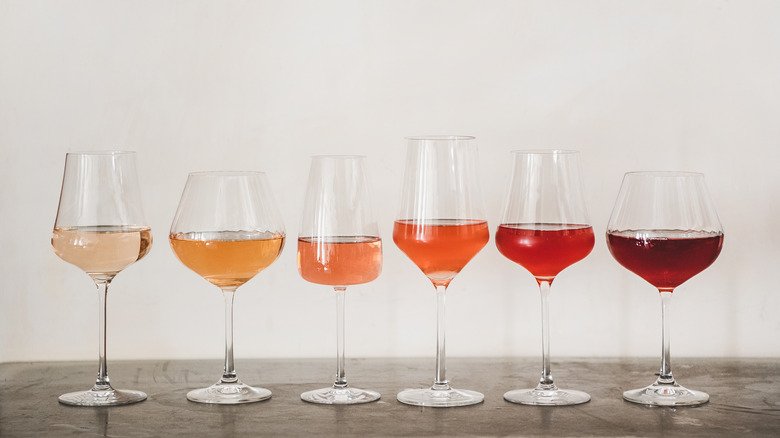Expert Explains What Glass You Should Really Use To Drink Wine
A winemaker or sommelier's dedication to their craft is apparent in the way they taste wines — pouring the wine in the proper stemmed glass, observing the color by holding up to the light, swirling and sniffing to smell its aroma, and slurping the wine to introduce oxygen to taste it more clearly. It can be intimidating to observe this ritual, but understanding the reasons behind the movements can make it accessible for even casual wine drinkers. All these acts optimize the drinking experience using a combination of senses: sight, smell, and of course, taste.
Curiously, the tongue plays a much smaller role in tasting flavor than we think. Flavor is actually determined by a combination of senses, primarily smell. "Taste is 80% dependent on olfaction, so without the ability to smell, all food and drink can only be sensed as [sweet, sour, bitter, salty, and umami] with no other differentiation possible," according to the Stanford Sinus Center. This is why when we are sick or have a stuffy nose, food and drink taste less vibrant.
So when tasting wine, the aroma is very important in tasting flavor. According to Mathew Woodburn-Simmonds, a former sommelier and the founder of Decoding Wine, one of the most influential ways to inhibit the aroma of a wine is the shape of the wine glass. Wide-mouthed Bordeaux glasses, tall and thin Champagne flutes, and somewhere in the middle Chardonnay glasses, all inhibit or restrict the wine's contact with air differently, changing the taste.
Swirl, sniff, and sip
You've heard of letting the wine "breathe" — which basically means exposing it to oxygen so it can release more volatile vapors such as sulfites and ethanol, leaving the more desirable characteristics to shine through after a short rest — well the shape of a wine glass also impacts how much air is in contact with the wine. "Narrower glasses have less [contact with air], wider ones have more," says Mathew Woodburn-Simmonds. "You will see some glasses that are quite wide at the bottom but then narrow to the lip. These are to allow a good amount of contact with the air but then concentrating the aroma particles. This can help give the wine a more intense aroma."
Narrow-lipped glasses with this tulip shape are used to serve Reisling, Cabernet Sauvignon and Champagne. Whereas wider and fatter glasses are used to serve full-bodied red wines like Bordeaux and Merlot. The wide opening and shallower glass allow for a greater surface area which allows the ethanol to evaporate (via Rocky Mountain Barrel Company).
Woodburn-Simmonds, whose mission is to decode wine for beginners, gave a cheat sheet way to know what glasses to use for which wines. "In general, you want larger glasses with more air contact for red wines and narrower for white." Additionally, he explains older wines benefit from the breathing room in a wider glass, whereas younger wines should be served in a narrower glass that slows oxidation.

